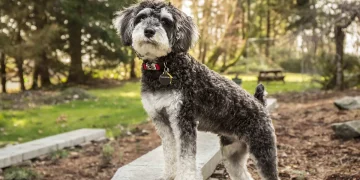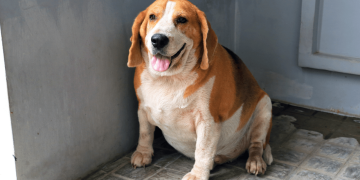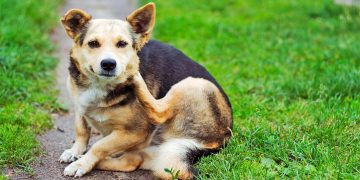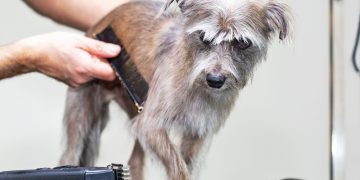Aggression in pets is one of the most challenging behavioral problems that pet owners can face. Whether a pet is displaying aggressive behavior towards other animals, humans, or both, it can lead to stress, anxiety, and even danger for both the pet and its family. However, aggression is a behavior that can often be mitigated with the right approach. Understanding the root causes of aggression and using appropriate training techniques can help create a safer, more harmonious environment for all involved. This article will explore the various types of aggression in pets, their causes, and effective strategies for managing and preventing aggressive behavior.
Understanding Pet Aggression
Before addressing how to deal with aggression, it’s crucial to understand what aggression in pets entails. Aggression can be broadly defined as any behavior exhibited by a pet that is intended to assert dominance, defend territory, or respond to fear or discomfort. While many pets may show signs of aggression at some point, it’s important to identify whether the behavior is temporary or a recurring issue. Types of aggression commonly observed in pets include:
- Territorial Aggression: Some pets, especially dogs, are highly protective of their home or their resources, such as food, toys, and bedding. This can lead to aggressive behavior when they feel their territory or possessions are being threatened.
- Fear Aggression: Pets that have not been properly socialized or have had negative experiences with humans or other animals may react aggressively when they are scared or feel threatened.
- Protective Aggression: This occurs when pets act aggressively to protect their owners or themselves. It can happen when a pet perceives that someone or something is a threat to their family or their safety.
- Social Aggression: This type of aggression typically occurs when a pet, such as a dog, interacts with other animals. Dogs can display aggression towards other dogs or animals due to fear, dominance, or frustration.
- Redirected Aggression: This happens when a pet is provoked by something (such as another animal or a situation) but cannot address the stimulus directly. Instead, they may redirect their aggression towards a nearby person, animal, or object.
Each type of aggression requires a different approach to treatment, which is why understanding the cause behind the aggression is key to effectively managing the behavior.
Causes of Aggression in Pets
Aggression in pets is a complex issue, and there are several potential causes behind this behavior. While some aggression can be attributed to genetic factors or breed tendencies, environmental influences, and the pet’s upbringing often play a significant role. Common causes include:
- Lack of Socialization: Pets, particularly dogs, that have not been properly socialized from an early age may struggle to interact with unfamiliar people, animals, or situations. This can lead to fearful and defensive behavior, which can manifest as aggression.
- Trauma or Abuse: Pets that have experienced neglect, abuse, or traumatic events may develop aggressive tendencies. Fear-based aggression is often seen in pets that have been previously mistreated.
- Pain or Illness: If a pet is in pain or suffering from an illness, they may act out aggressively as a way to protect themselves from further discomfort. Pets suffering from conditions like arthritis, dental disease, or even headaches may be more prone to aggression.
- Resource Guarding: Some pets may display aggressive behavior when they feel that their resources—such as food, toys, or resting spots—are being threatened or taken away.
- Dominance Issues: In certain cases, pets may act aggressively in an attempt to establish dominance. This is more common in intact (non-neutered) male dogs and in pets that have not been taught proper boundaries.
- Genetics: Certain breeds of pets may be more prone to aggression due to their genetic makeup. This is particularly true for some dog breeds, where certain genetic traits make them more likely to show territorial or protective aggression.
- Fear: A pet that is scared or feels threatened may respond aggressively as a defensive measure. Fear aggression is often seen in pets that have had limited exposure to new experiences or who have experienced traumatic events.
Understanding the cause of aggression is crucial to addressing it appropriately. The next section will outline specific techniques for managing and mitigating aggressive behavior in pets.
Techniques for Managing Aggressive Behavior
Managing aggressive behavior in pets requires patience, consistency, and, in some cases, professional assistance. The following techniques can help pet owners address and reduce aggression:
1. Consult a Veterinarian
If a pet suddenly becomes aggressive or shows a significant change in behavior, it’s important to consult a veterinarian. Pain or illness can often be the underlying cause of aggressive behavior. A veterinarian can perform a thorough examination to rule out medical issues that may be contributing to the aggression.
2. Behavior Modification and Training
Training is one of the most effective ways to manage aggression. Positive reinforcement techniques, such as rewarding desirable behavior with treats or praise, can help reshape aggressive behavior over time. Some key approaches include:
- Desensitization: This involves gradually exposing the pet to the stimulus that causes aggression in a controlled and positive way. For example, if a dog becomes aggressive when meeting new dogs, the owner can begin by introducing the dog to calmer, well-behaved dogs in a safe, controlled environment.
- Counter-Conditioning: This technique involves changing the pet’s emotional response to a particular trigger. For instance, if a dog becomes aggressive towards strangers, the owner can work to create positive associations with strangers by giving the dog treats and praise when they behave calmly around new people.
- Positive Reinforcement: Rewarding a pet for calm behavior and ignoring aggressive responses can help encourage non-aggressive behavior. For example, if a dog shows aggression when meeting another dog, rewarding calm behavior with treats can help the dog associate calmness with positive outcomes.
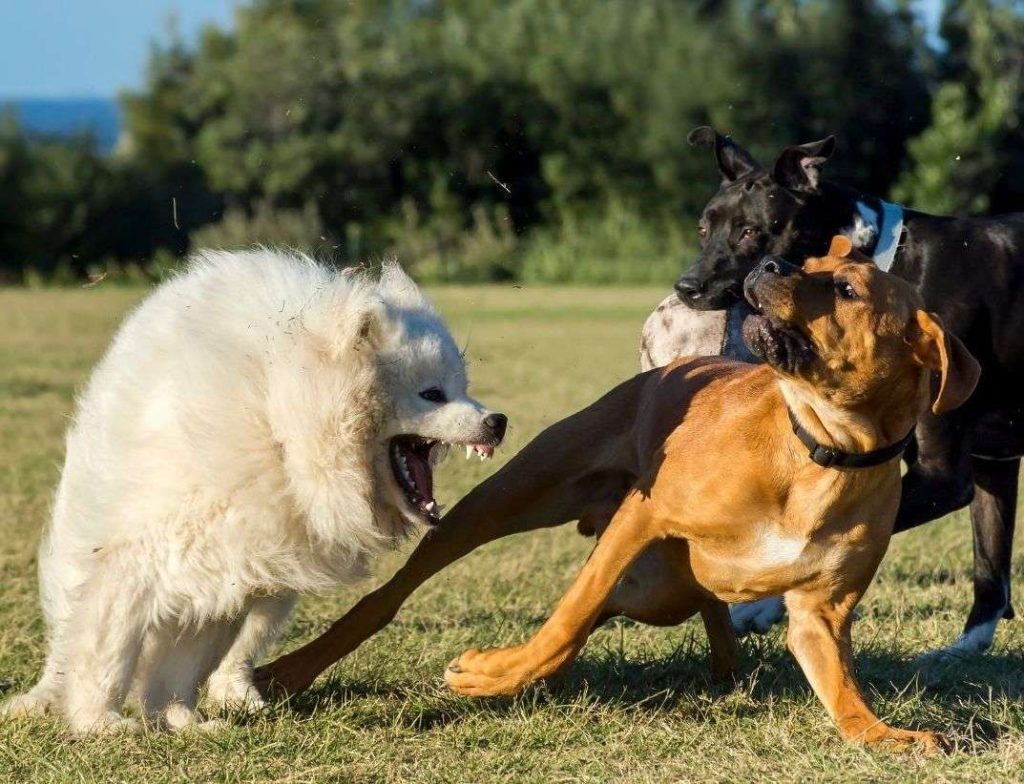
3. Establish Boundaries and Consistency
Aggressive behavior often stems from a lack of clear boundaries. Establishing and maintaining consistent rules within the household is important for a pet’s behavior. This may involve setting limits on access to certain areas, using crates or barriers for safe spaces, and maintaining a consistent routine.
Consistency is crucial when working with an aggressive pet. All members of the household must follow the same rules and training techniques to avoid confusion and reinforce positive behavior.
4. Avoid Punishment
Punishing an aggressive pet is often counterproductive and can exacerbate the issue. Aggression may stem from fear, and punishment can increase that fear, causing the pet to act out even more. Instead, focus on positive reinforcement and redirecting the pet’s behavior toward desirable actions.
5. Manage the Environment
For pets displaying territorial aggression, managing the environment can be a useful strategy. For example, keeping doors and gates secure, limiting access to areas where the pet becomes aggressive, and using barriers such as baby gates can help reduce opportunities for confrontations with other animals or people.
6. Socialization
Proper socialization is essential for preventing fear-based aggression. This is particularly important for puppies and kittens, but older pets can benefit from socialization as well. Gradual introductions to new people, pets, and environments can help a pet learn to navigate the world around them without resorting to aggression.
7. Consider Professional Help
If aggressive behavior persists despite your best efforts, it may be time to seek the help of a professional animal behaviorist or a certified dog trainer. These experts can assess the situation, identify triggers, and create a tailored behavior modification plan for your pet.
Preventing Aggression in Pets
While addressing existing aggression is important, preventing it from developing in the first place is equally crucial. Here are some tips for preventing aggression in pets:
- Start Early: Socializing pets early on and exposing them to different people, animals, and environments can reduce the likelihood of fear-based aggression later in life.
- Spay/Neuter Your Pet: Neutering or spaying your pet can help reduce certain types of aggression, particularly dominance-related aggression in dogs.
- Provide Mental and Physical Stimulation: Boredom and frustration can lead to aggressive behavior. Providing pets with toys, puzzles, and opportunities for exercise can help alleviate pent-up energy.
- Maintain Consistency: Keeping a consistent routine, using positive reinforcement, and setting clear boundaries can go a long way in preventing aggression from developing.
- Teach Respect for Boundaries: Teaching pets to respect human space and boundaries—such as not jumping on people or stealing food—can help reduce aggressive behavior in the future.
Conclusion
Dealing with pet aggression can be a challenging and stressful experience, but with the right knowledge, patience, and techniques, it is possible to manage and reduce aggressive behavior. Understanding the root causes of aggression, whether it’s fear, territoriality, or medical issues, is the first step in addressing the behavior. Using positive reinforcement, maintaining consistency, and providing proper training and socialization are key components in creating a harmonious environment for both the pet and the household.
If you are struggling with aggression in your pet, don’t hesitate to seek the guidance of a veterinarian or professional behaviorist. By approaching the issue with care and commitment, you can help your pet overcome aggression and build a better relationship with them.







